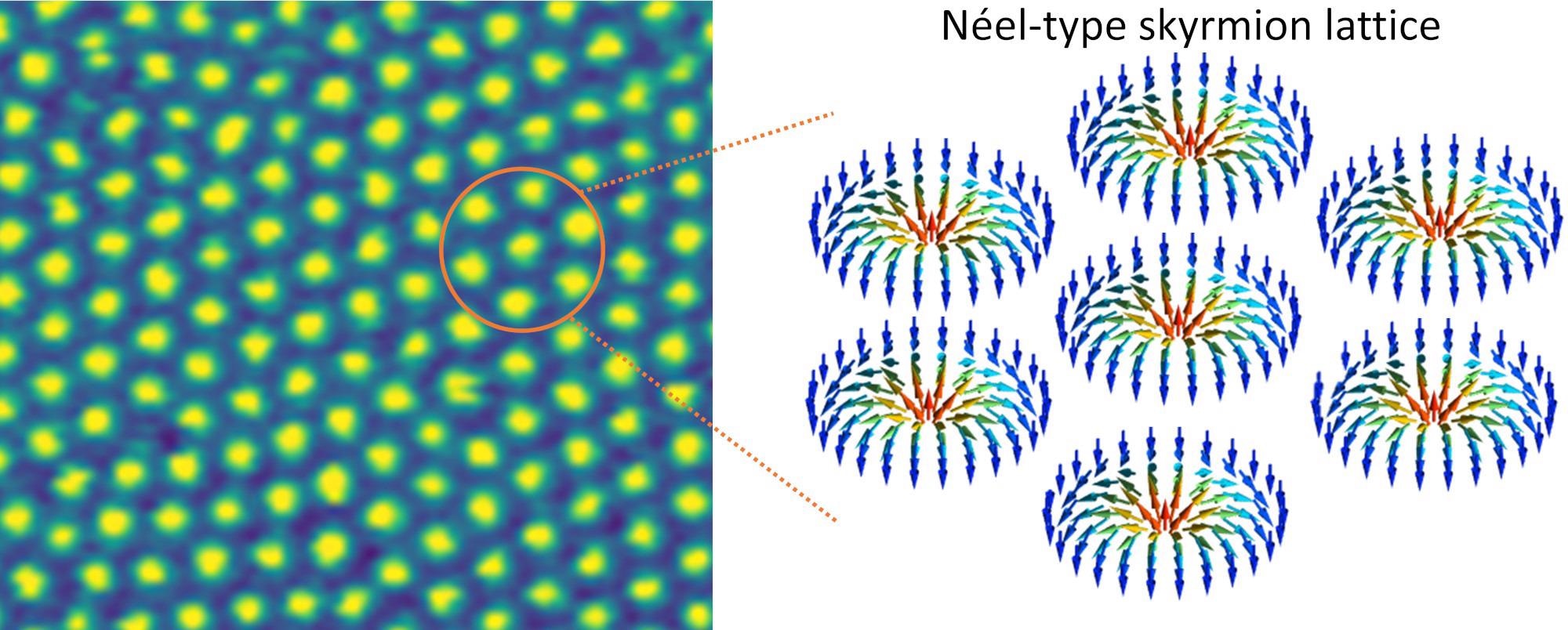2D magnetic materials have been recognized as the foundation for the next generation of compact, rapid electronic gadgets. The intrinsic compass-needle spins of their electrons give these materials, which are built up of layers of crystalline sheets only a few atoms thick, their distinctive magnetic properties.
 A map produced by magnetic microscopy techniques shows vortex-like spin patterns called skyrmions appearing in a thin, layered 2D material. Berkeley Lab researchers say the material could advance smaller, faster, energy-efficient electronics such as low-power memory devices. Image Credit: Berkeley Lab.
A map produced by magnetic microscopy techniques shows vortex-like spin patterns called skyrmions appearing in a thin, layered 2D material. Berkeley Lab researchers say the material could advance smaller, faster, energy-efficient electronics such as low-power memory devices. Image Credit: Berkeley Lab.
Due to the sheets’ atomic-scale thinness, external electric fields may be used to manipulate the spins on the smallest scales, possibly leading to revolutionary low-energy data storage and data processing devices. However, figuring out how to create 2D materials with specific magnetic characteristics that can be precisely controlled remains a challenge.
Researchers from Lawrence Berkeley National Laboratory (Berkeley Lab), UC Berkeley, Cornell University, and Rutgers University have found layered 2D materials that can access unique magnetic features — capable of being stable at room temperature — and could thus be used in future daily devices, as reported in the journal Science Advances.
The chemical and structural factors that are responsible for these properties and their stability are revealed in atomic-scale images of the material.
Researchers at Berkeley Lab have a history of discovering unanticipated magnetic characteristics in atomically thin layers of bulk crystals, many of which are focused on semiconductor materials doped with metal atoms. Tyler Reichanadter, a co-author of the study and graduate student from UC Berkeley, predicted how the electrical structure of typical 2D materials would alter if various atoms were swapped out, in this case, exchanging iron for cobalt.
This specific exchange produces a crystal structure that cannot be overlaid on its mirror counterpart, opening the door to novel, vortex-like spin configurations known as skyrmions, which are being investigated as potential low-power computing building blocks.
Co-authors of the study Hongrui Zhang, a UC Berkeley postdoctoral researcher, and Xiang Chen, a Berkeley Lab and UC Berkeley postdoctoral researcher, employed crystal growing facilities to investigate some of the most attractive 2D materials, like cobalt-doped iron germanium telluride (Fe5GeTe2) nanoflakes.
Due to its distinct layered structure and crystal symmetry, Fe5GeTe2 is a typical 2D magnetic material, with iron atoms occupying specified positions within the crystal structure.
Researchers discovered that by substituting approximately half of the iron atoms with cobalt atoms — whose little different electrical configuration means the atoms naturally occupied slightly different locations in the crystal — scientists could violate the material’s intrinsic crystal symmetry, altering its spin structure.
It is not easy to do. These structures take days or months to synthesize, and we went through hundreds of crystals.
Xiang Chen, Postdoctoral Researcher, Materials Sciences Division, Lawrence Berkeley National Laboratory, University of California, Berkeley
Chen is a specialist in the development of such complicated materials.
Sandhya Susarla, a Berkeley Lab postdoctoral researcher, and Yu-Tsun Shao, a Cornell postdoctoral researcher, used electron microscopy functionalities at the National Center for Electron Microscopy at the Molecular Foundry to confirm the atomic-scale structure and electronic structure of the complex materials.
This is pure discovery science and completely unexpected. The team was trying to manipulate electronic structure, and found that by breaking the symmetry, the material could host skyrmions.
Ramamoorthy Ramesh, Study Senior Corresponding Author and Senior Faculty Scientist, Materials Sciences Division, Lawrence Berkeley National Laboratory, University of California, Berkeley
Robert Birgeneau, Kaichen Dong, Peter Fischer, Jie Yao, Jeff Neaton, and Rui Chen were among the other authors of the research from Berkeley Lab.
Zhang imaged the skyrmions across vast regions of such crystals using magnetic force microscopy. The researchers discovered the physical parameters that lead to the stability of the skyrmions by studying their development as a function of temperature and magnetic field.
Furthermore, the researchers discovered that by running an electric current through the material, scientists could force the skyrmions to shift inside the material, irrespective of the atoms that caused their development in the first place.
Finally, micromagnetic simulations were used by David Raftrey, a researcher and graduate student from Berkeley Lab and UC Santa Cruz, to analyze the observed electrical patterns in those materials.
The researchers believe that the magnetic characteristics of the layered materials may be increased and expanded since they can be manufactured with a wide variety of thicknesses at room temperature and higher.
We are interested in the microelectronics, but fundamental questions about the physics of materials really inspire us.
Hongrui Zhang, Study Co-Author and Postdoctoral Researcher, Department of Materials Science and Engineering, University of California, Berkeley
The DOE Office of Science provided some funding for this study.
Berkeley Lab’s Molecular Foundry is a DOE Office of Science user facility.
Journal Reference:
Zhang, H., et al. (2022) Room-temperature skyrmion lattice in a layered magnet (Fe0.5Co0.5)5GeTe2. Science Advances. doi.org/10.1126/sciadv.abm7103.